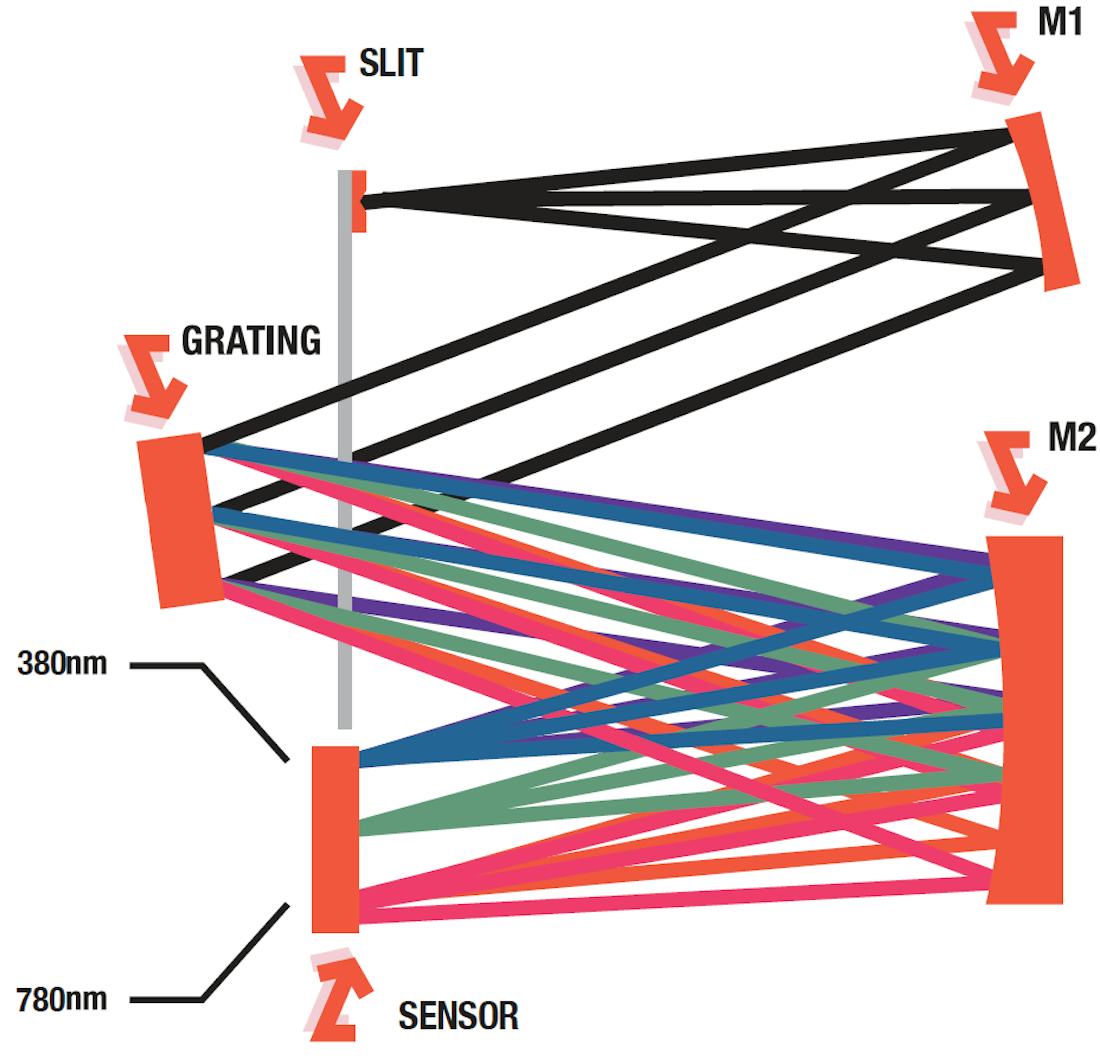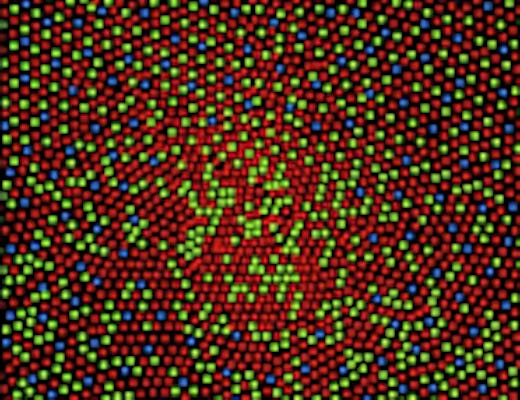Performing Advanced Spectral Measurement with Admesy Spectrometers
A spectroradiometer is designed to accomplish spectral measurement across a wavelength ranges based on an absolute calibration. This calibration allows accurate and precise determination of distinct radiometric, photometric, and colorimetric characteristics of a light emitting object by measuring and analyzing its spectral power distribution. This singular spectral measurement method can perform with complete autonomy within a robust and compact housing suitable to various industries, providing accurate insights into both photometric and spectroradiometric values.
How Spectroradiometers Perform Spectral Measurements
The observation of the light output of an object is first captured by sensitive optic equipment which allows a spectroradiometer to capture light of different wavelength ranges from varying fields of view, to differing degrees of control. The three primary optical component options for spectroradiometers are:
- A (collimating) lens, which allows users to determine the field of view by narrowing rays of light to make (parallel) beams;
- A cosine corrector, which allows users to acquire and redistribute light from a 180° field of view with a Lambertian response;
- An integrating sphere, which features a reflective cavity around or in front of the light input to maximize the efficiency of the device.
After passing through an optical configuration, such as a lens, the light enters the spectrometer through the slit. The dimensions of this slit regulate the amount of light entering the optical bench and this affects the optical resolution of a spectroradiometer. A concave mirror [M1] reflects the divergent incoming beam into a collimating beam towards the grating where dispersion of the light takes place. Admesy’s Neo uses a reflective grating: the collimated light beam is dispersed into different wavelengths upon reflecting on the grating. Different wavelengths reflect on the grating under different angles, creating multiple divergent beams. A second concave mirror [M2] reflects and focuses the different separated wavelengths towards the detector.

The optical bench of a spectrometer is designed in such a way that particular wavelengths are focused on specific pixels of the sensor. By verifying wavelengths and assigning pixels to specific wavelengths the device is wavelength calibrated: signals picked up by a pixel are linked to a specific wavelength and this results in a device known as a spectrometer. A second calibration step is necessary as not every pixel responds the same way to the true intensity of a wavelength. For this reason, it is important to determine the correct proportions for each pixel. This second calibration step is achieved by calibrating against [calibration] light sources such as a NIST traceable lamp. Such light sources come with datasheets on their spectral distribution in absolute values. Once the results from the spectrometer are matched towards the known results of a standard light source, the device is entirely calibrated and ready for absolute and accurate measurements. After this calibration step, the device is known as a spectroradiometer. Besides the radiometric quantities, a spectroradiometer can also measure colorimetric and photometric quantities very accurately if it covers the VIS range. Spectroradiometers that cover the 380-780nm VIS range only, are also known as spectrophotometers.
Spectroradiometers from Admesy
Admesy has also applied its vision on
compact, robust design with excellent measurement capabilities towards
its range of spectroradiometers. Their design allows them to be used
from research & development applications to continuous use in
production lines. The spectral range covered by Admesy products
currently covers the 250-1100nm range with limitless options in custom
wavelength range, slit size and resolution and optics for a wide range
of applications. The Neo series is the high-end platform for a multitude of different spectral applications, while the Hera series is a compact spectroradiometer series
If you would like any more information about our spectral measurement products, please contact us.

